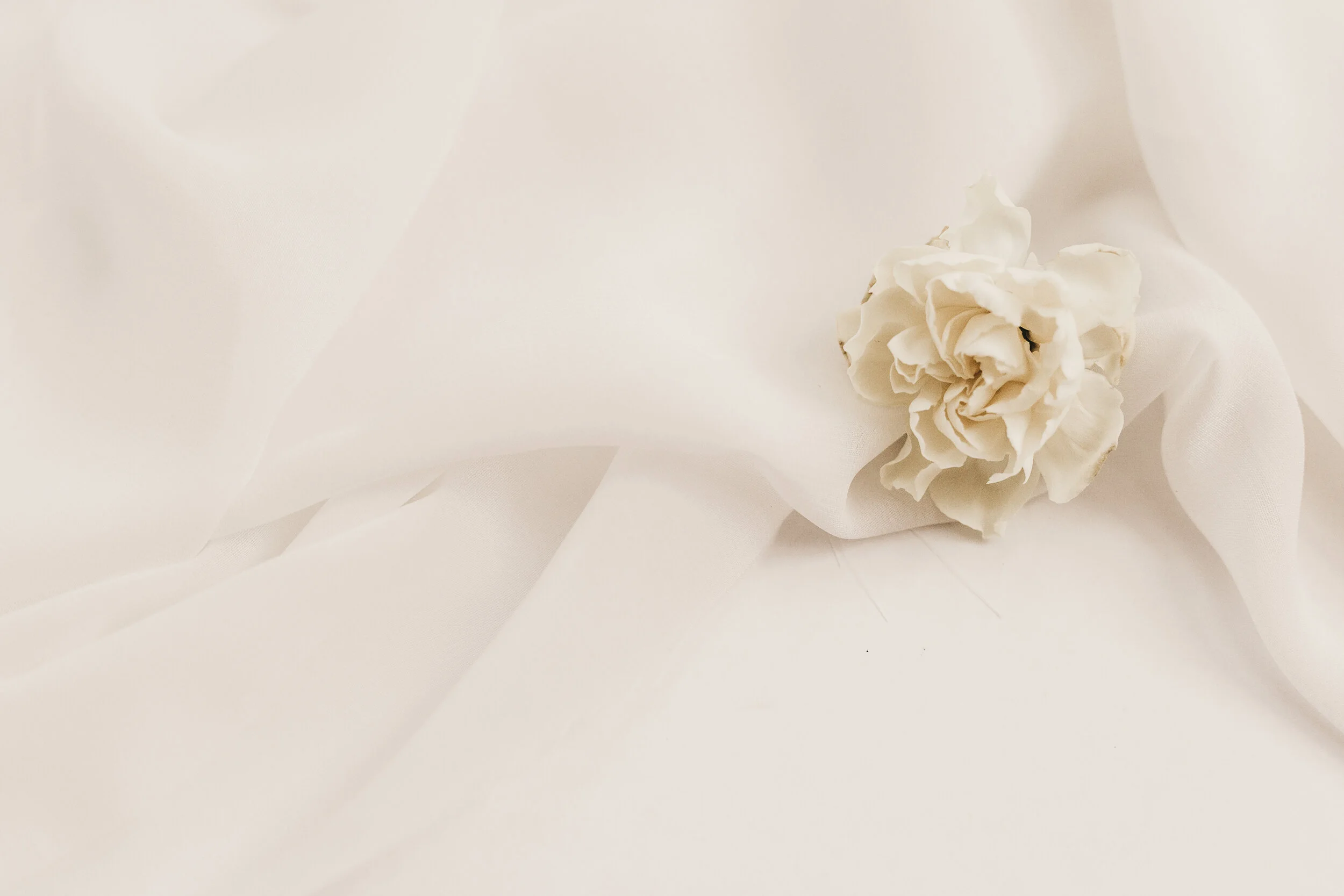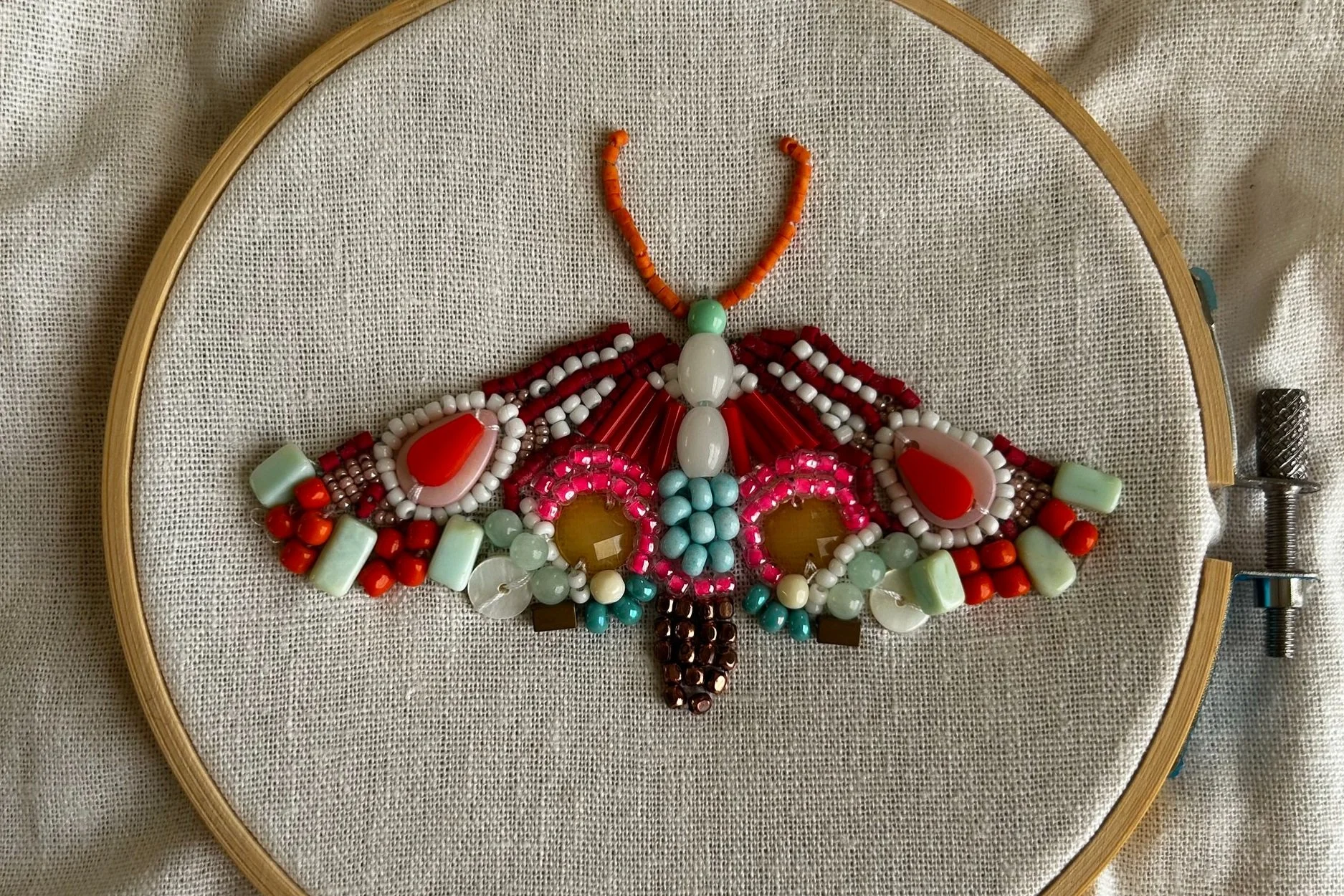Silk
Photo by fotohunter/iStock / Getty Images
Who doesn’t love silk sheets, silk pajamas, or vibrantly colored silk scarves? This luxurious fiber has a crazy long history that can be traced to the 4th millennium B.C.E. in China. It spurred the creation of the legendary Silk Road that was the Eurasian highway of trade during antiquity. Silk was traded from China in exchange for wool, gold, and silver from Southern Europe (Rome, Greece, and Turkey.) Of course like in all trade routes throughout, ideas were also exchanged. Ancient Chinese kept the silk cultivation process an industry secret while Romans speculated where this glorious fiber came from. Eventually, silk was cultivated by citizens of the Byzantine Empire. They figured out that little caterpillars from the moth species belonging to the Bombyx genus created this elegant fiber.
Yes, that’s right, silk is an animal protein fiber that is cultivated from the cocoons of silkworms (or caterpillar). The cocoons are spun by the caterpillar in a single strand. That strand is typically 440-1640 yards in length and referred to as a filament. The caterpillar changes to a chrysalis with a cocoon the size of a peanut shell. To cultivate the whole cocoon, the chrysalis is killed with steam or dry heat. After boiling to get rid of the sticky gum on the fiber, the strand is then unwound to be spun into threads that can be woven or knitted to create fabric. Throughout history, this process was done by hand. In modern times, much of this process is performed by machines. The process of egg hatching and temperature control is monitored by computers to ensure a consistent harvest of silk.
Why Silk?
Silk fiber is known for its luster or shine. It is also soft and drapes well to create a very comfortable garment. Traditionally, this fiber was used to make fabric for aristocrats throughout history. It can keep you warm but isn’t often used for warmth. It is also absorbent.
Why Not Silk?
One of the reasons that silk was not traditionally used as a fabric for commoners is the fiber's sensitivity to perspiration. This is not a fabric for hard labor. Silk is strong but not as strong as wool. When it is wet, silk loses its strength like Superman near kryptonite.
Where Does Silk Come From?
China still leads as the biggest producer of silk. India, Uzbekistan, Brazil, Iran, and Thailand are also common producers of this fiber. Japan, North, and South Korea also produce silk.
Impact on the environment
The impact of silk production is fairly low compared to other fibers. There is very little waste left over from the process. The biggest issues stem from the amount of energy used to keep the cocoons in a controlled temperature environment, and the steaming process. Since the silkworms' diet consists of the leaves of mulberry trees, synthetic fertilizers and insecticides are used to keep the trees intact for consumption.
The dyes sometimes used for commercial silk can be toxic to people and the environment.
How do I know if it’s good quality?
Silk Photo by Kerri Shaver
Since silk is created from long filaments its smooth texture is often prized. Heavier silk tends to be created from heavier yarns and/or tighter weaving. There is a process using chemicals that creates fraudulently heavier silk that is stiff.
Silk and Animal Rights
Obviously, the process of commercial cultivated silk involves killing caterpillars. Wild silk does not involve the killing of insects. Wild silk is created from cocoons of caterpillars that live on a more diverse diet besides human cultivated mulberry trees. The chrysalis completes its cycle and becomes a moth that breaks its cocoon to head into its next lifecycle. Wild silk tends to be a bit more coarse and golden in color than cultivated silk. It also has a slubby texture because it is created from shorter, uneven yarns due to the broken cocoon. There is another version of this process called ahimsa silk or peace silk. These practices are inspired by religions that teach non-violence like Jainism, Hinduism, and Buddhism.
Dyeing at home
Silk is fairly easy to dye at home. Silk fabric makes a superb canvas for painting with dyes because it is so absorbent. Natural dyes (dyes from food waste, spices, and plants) work well on silk. RIT, a home dye that is easy to obtain, also works well on silk.
Wool Care & Storage
Washing
The key to keeping silk garments for a long time is to wash them after each wear. Perspiration eats at the silk over time. Handwashing is recommended for silk garments. Like wool, silk is often labeled “Dry Clean Only.” Don’t buy into the hype. You can wash it yourself.
There is machine washable silk which will be announced on the label or hangtag of the garment when you buy it. Chemical treatments were applied to the silk fabric to make it more durable for easy care. Easy for you, not so much for the climate. It still needs more care than cotton, because silk needs lower water temperatures and mild unscented soap rather than detergent. Mild soap means anything that you would use for your hair or body. Just so you know, the dye on washable silk tends to bleed more.
Drying
Dry flat on a towel or a drying rack.
Light
Exposure to sunlight over many years can cause silk fibers to weaken. Store it in a container to avoid this.
Heat
Silk gets dry and stiff from heat exposure. Avoid the dryer at all costs if you want to keep your silk for ages.
Ironing
Use the lowest heat setting on your iron when getting the wrinkles out of your silk garment. Just use a pressing cloth or towel or cotton bed sheet between your garment and the iron. Hanging your garment in a steamy bathroom is a truly economical and eco-friendly way to get wrinkles out.
Bleach
Don’t even think about it. Just don’t. You’ll fuck up your silk.





